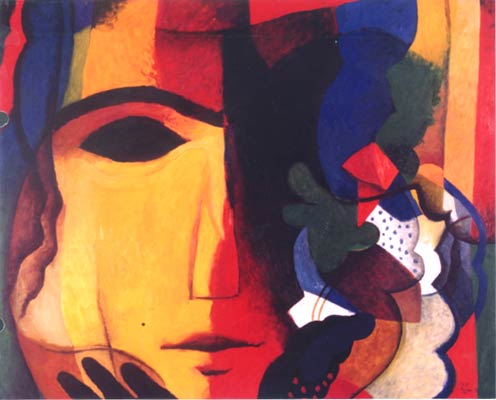An answer to this question very much depends on what frameworks of inquiry we apply. Semantically speaking, in the Arabic language the three letters ‘عرب refer primarily to a waterless, deserted and barren land. For thousands of years they stood more specifically for the landmass naturally bordered by the Sinai, the Red Sea, the Arabian Gulf, the Indian Ocean and the Fertile Crescent. Following this the Arabs are then seen to be the nomadic people that have inhabited this land for millennia.
Traditionally these have been divided into three groups according to lineage. The first are the Perishing Arabs, like the Ad, Thamud, Emlaq, Jadis etc. of whose history is little known. The second are the Qhatanian Arabs who are descendants of Ya’rub bin Yashjub bin Qahtan. And thirdly the Adnanian Arabs who are seen as the son’s of Ishmael, son of Abraham. Some people have described the Qhatanian Arabs, who originating somewhere in Yemen as the ‘Pure Arabs’ and the Adnanian Arabs as ‘arabized’ people of another origin. Today, anybody who can claim to descent from any of these people is in genealogical terms an Arab.
It has to be noted that each connection of a people and a land, is no more than a snapshot in time, and at different times different peoples have claimed the very same territory. However an interesting question that arises from the general orthodoxy above is from what moment in time did Ya’rub bin Yashjub bin Qahtan call himself an Arab and what was he before that? Or from what point onwards were the Adnanian Arabs thought about as Arabs and what were indicators of their arabness?
Another classification of which genealogy forms one pillar is that of ethnicity. An ethnic group has been described to be biologically self-perpetuating, sharing cultural values and forms, makes up a field of interaction and communication and has a membership that identifies itself and is identified by others as constituting a category distinguishable from other categories of the same order. These definitions deserve greater consideration.
As much as we love to claim clear patrilines, biological coherency is difficult to claim for two reasons. Firstly, as shown above, Arabs are by definition not of one people. Secondly, if one considers the history of conquest of the area that the Arab people inhabit, it becomes clear that being Arab today, means to being a biological and cultural hybrid
Despite this great diversity, we do share some cultural commonalities. A most popularly invoked aspect of which is based on the third pillar of ethnicity, that of communication. Following this Arabs are seen to be those people who speak Arabic as their first language. This would however include many people that don’t consider themselves as Arabs, such as Copts and many Lebanese Maronite Christians, and exclude many second generation emigrants.
Be that as it may there are other cultural denominators that we share as a people, although these are not exclusive to us as Arabs. Hospitality as a value and custom is one, of such. Connected to this is food and drink. We do share some dishes throughout the Arab World, like Tabouhle and Houmous. Tea, or coffee drinking and smoking- or rather excuses to socialize and talk are other activities that can be observed from Baghdad to Nouakchott. To a degree an identity will always be a construct of differing and factors which overlap with other identities.If we look at the emergence of other regional identities in different parts of the globe we can see the relative construction of cultural coherence. For example when the European Union was created at the beginning of the 1990’s, the questioned was posed, “What does it mean to have a European identity?’ The discussions that followed generally focused on a common geography notion of ancient Greek political heritage, the conquest of the Romans and following this the spread of Christianity. These variables seem vague, and would allow the inclusion of some countries of the Levant and North Africa.
The fourth pillar of ethnicity seems somehow crucial and following it, Arabs are those people that define themselves as such and are also defined as such by others. Historically, especially Kurds, Persians and Amazigh have been known to cross ethnic boundaries and arabize, but technically everybody could do so.
Being an Arab is a non-essential identity. It exists beside the fact that one is of a certain family, tribe, city, region, country, religion or occupation. The point of religion has to be stressed as many western observers confuse the Arab with the Muslim world. Despite the great influence that Islam had on the Arab World, it has to be clear that an Arab can be a Christian, Jew, Muslim, Druze, Buddhist, Secular, Gnostic or whatever he or she likes to be. Thus to sum up, Arabs can be described, as a group of people that is loosely connected by culture, habits and customs, however doesn’t correspond to a particular religion, race or ethnicity.
Finally, but maybe most importantly, people who live in the area described as the Arab world face similar obstacles to the expansion of their full human potential. Although I’d like to refrain from uniting a region in the framing of problems, we have to recognize the common challenges that we face. Being an Arab today frequently also means to live under authoritarian rule, old or new forms of colonialism, distortion of history, endemic underdevelopment, lack of education, technological underdevelopment, intellectual and economic impoverishment, non-emancipation, informational isolation etc. More positively expressed it means that we have to join in the same battles, that we share the desire to take the future with our own hands and form from it what we wish.
Subscribe to:
Post Comments (Atom)





No comments:
Post a Comment